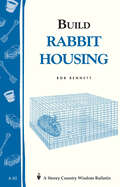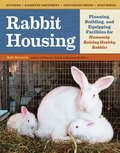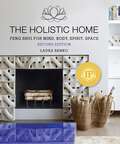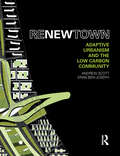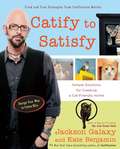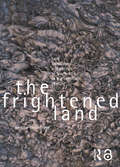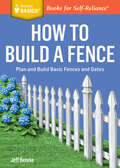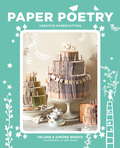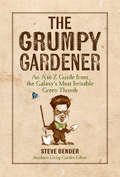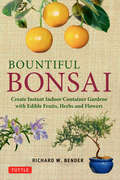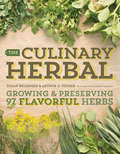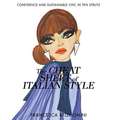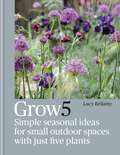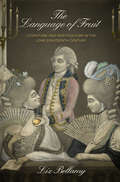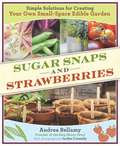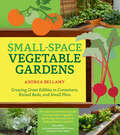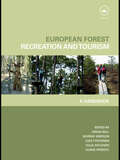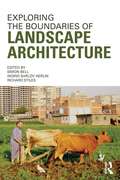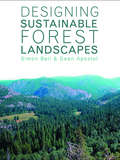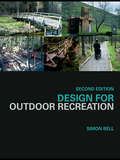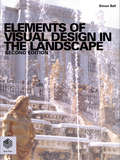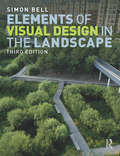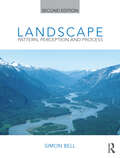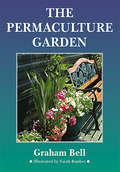- Table View
- List View
Build Rabbit Housing: Storey Country Wisdom Bulletin A-82 (Storey Country Wisdom Bulletin Ser.)
by Bob BennettSince 1973, Storey's Country Wisdom Bulletins have offered practical, hands-on instructions designed to help readers master dozens of country living skills quickly and easily. There are now more than 170 titles in this series, and their remarkable popularity reflects the common desire of country and city dwellers alike to cultivate personal independence in everyday life.
Rabbit Housing: Planning, Building, and Equipping Facilities for Humanely Raising Healthy Rabbits (Storey's Guide To Raising Ser.)
by Bob BennettCreate a safe, sanitary, and efficient home for your rabbits. In this informative guide, Bob Bennett provides clear step-by-step instructions for building attractive all-wire hutches of all sizes, with additional tips for adding the necessary accessories like feeders, watering systems, nest boxes, and fencing. From the direction a hutch door should swing to proper ventilation and protection from predators, Bennett covers everything you need to know to create a housing structure that will help promote a healthy and productive rabbit-raising operation.
The Holistic Home: Feng Shui for Mind, Body, Spirit, Space
by Laura BenkoRule the world and take control of your emotional and mental health from where you sit, stand, and sleep. The Holistic Home is based on an original lifestyle concept focused on creating a dynamic, healthy, and thoughtful space within yourself and your home by combining three planes of action—mind, body, and spirit—that result in profound change. The condition of the mind affects the psychology of how you dwell: subconscious influences, decorating with intention, and allowing your emotional issues and challenges to manifest in your space. The physical aspects of your design space, such as furniture positioning, design elements, sustainability, wellness, and organization, are representative of your relationship with your body. And finally, the spirit refers to all the invisible energies within you and your home—feng shui, atmosphere, and the soul of your home. Years ago, author and holistic feng shui expert Laura Benko was diagnosed with a rare cancer. Around that time, a book serendipitously fell on her head. She took this as a much-needed sign to devote the next decade of her life to research and hundreds of transformative holistic design consultations. Her clients&’ real-life, inspiring stories, along with specific actions and tips, have become the foundation for The Holistic Home. Chapter by chapter, you&’ll learn how to holistically tackle it all—relationships, clutter, health, communities, inner balance, and more—by looking within your immediate environment to make direct connections in your life.
ReNew Town: Adaptive Urbanism and the Low Carbon Community (Routledge Contemporary Asia Ser.)
by Eran Ben-Joseph Andrew ScottReNew Town puts forth an innovative vision of performative design and planning for low-carbon sustainable development, and illustrates practicable strategies for balancing environmental systems with urban infrastructure and new housing prototypes. To date, much of the discourse on the design of sustainable communities and ‘eco-cities’ has been premised on using previously undeveloped land. In contrast, this book and the project it showcases focus on the retrofitting and adaptation of an existing environment – a more common problem, given the extent of the world’s already-built infrastructure. Employing a ‘research through design’ model of inquiry, the book focuses on large-scale housing developments – especially those built around the world between the 1960s and the early 1980s – with the aim of understanding how best to reinvent them. At the center of the book is Tama New Town, a planned community outside Tokyo that faces a range of challenges, such as an aging population, the deterioration of homes and buildings, and economic stagnation. The book begins by outlining a series of principles that structure the ecological and energy goals for the community. It then develops prototypical solutions for designing, building and retrofitting neighborhoods. The intent is that these prototypes could be applied to similar urban conditions around the world. ReNew Town is the product of a collaborative design research project at the Massachusetts Institute of Technology (MIT) School of Architecture and Planning, and Japan’s Sekisui House LTD.
Catify to Satisfy
by Kate Benjamin Jackson GalaxyIn this book, Jackson Galaxy, star of Animal Planet's hit show My Cat from Hell, and Kate Benjamin, cat design wizard, show cat guardians everywhere how to use home design tricks to address everyday cat care issues. Does your feline friend like to pee everywhere but in his or her litter box? Does your kitty have a thing for your furniture that has left your beloved couch in tatters? Catify to Satisfy will show you how simple DIY design projects and hacks can help bring harmony back into your home. Featuring the amazing projects cat guardians from around the world have shared with Jackson and Kate--design strategies for solving even the most daunting kitty challenges--this book is the ultimate guide to creating a happy home for cat guardian and cat alike.From the Trade Paperback edition.
The Frightened Land: Land, Landscape and Politics in South Africa in the Twentieth Century
by Jennifer BeningfieldAn investigation into the spatial politics of separation and division in South Africa, principally during the apartheid years, and the effects of these physical and conceptual barriers on the land. In contrast to the weight of literature focusing on post-apartheid South Africa, the focus of this book includes the spatial, political and cultural landscape practices of the apartheid government and also refers to contemporary work done in Australia, England and the US. It probes the uncertainty and ambiguity of identities and cultures in post-apartheid society in order to gain a deep understanding of the history that individuals and society now confront. Drawing on a wealth of research materials including literature, maps, newspapers, monuments, architectural drawings, government legislation, tourist brochures, political writing and oral histories, this book is well illustrated throughout and is a unique commentary on the spatial politics of a time of enormous change.
How to Build a Fence: Plan and Build Basic Fences and Gates. A Storey BASICS® Title (Storey Basics)
by Jeff BenekeWhether you want to protect your garden, provide a safe enclosure for pets, or add privacy, this Storey BASICS® guide covers you everything you need to know to build the perfect fence. Offering clear step-by-step instructions, Jeff Beneke shows you how to construct a variety of fences from wood, vinyl, and chain link. With designs that are easily adaptable to all types of yards, you’ll soon be putting up a functional and beautiful fence that works with your landscape.
Paper Poetry: Creative papercutting
by Simone Bendix Helene BendixIn a world of screens and smartphones, there is something beautifully tangible and tactile about taking a piece of paper and cutting into it with a pair of scissors. With just a few folds and snips, an old shopping list can be transformed into a fluttering butterfly or a shooting star. Let your imagination run wild and bring fairy tales to life as you turn old books into hot air balloons and angels, or give new life to yesterday's newspaper as a garland of pretty hearts.Twins Helene and Simone have been papercutting for years, and between them have created a whole world of whimsical designs. In this delightful book, they share this magical skill with you - and the best part is, it's simple, creative and practically free. All you need is a pair of scissors and some scrap paper - no scalpel, no cutting mat, no complicated templates. With beautiful photography by Ben Nason, Helene and Simone's mindful approach embraces imperfection and opens up your creativity, helping you develop your own designs and ideas. Whether you want to cut a bouquet of flowers from old shopping receipts or transform discarded wrapping paper into Christmas decorations, this book is sure to delight and inspire.
Green Retreats
by Stephen BendingGreen Retreats presents a lively and beautifully illustrated account of eighteenth-century women in their gardens, in the context of the larger history of their retirement from the world whether willed or enforced and of their engagement with the literature of gardening. Beginning with a survey of cultural representations of the woman in the garden, Stephen Bending goes on to tell the stories, through their letters, diaries and journals, of some extraordinary eighteenth-century women including Elizabeth Montagu and the Bluestocking circle, the gardening neighbors Lady Caroline Holland and Lady Mary Coke, and Henrietta Knight, Lady Luxborough, renowned for her scandalous withdrawal from the social world. The emphasis on how gardens were used, as well as designed, allows the reader to rethink the place of women in the eighteenth century, and understand what was at stake for those who stepped beyond the flower garden and created their own landscapes.
The Grumpy Gardener: An A to Z Guide from the Galaxys Most Irritable Green Thumb
by Steve BenderGardeners from across the country have turned to Southern Living Senior Garden Editor Steven Bender - known affectionately as "The Grumpy Gardener" - for his keen knowledge and gardening know-how with equal doses sarcasm and sidesplitting humor for nearly 35 years. Finally, the collected wit and wisdom of the magazine's most irreverent and beloved columnist can be found in a single A - Z volume, providing gardeners from coast-to-coast with his valuable tips for planting, troubleshooting, and growing flowers, vegetables, shrubs, trees and more, all delivered in his signature cantankerous style. Sidebars throughout the book - "Ask Grumpy" - help readers tackle common garden problems ("How do I get ride of little house ants?"), and readers from the past 35 years take part in the book when Grumpy shares his favorite reader's responses to some of his advice, his favorite rules for gardening, and Q & A's covering your favorite plants and flowers are all inside. Additionally, beautiful line-drawings and illustrations throughout make the book as beautiful to look at as well as entertaining to read. The Grumpy Gardener is sure to become the most trusted tool in your gardening shed!
Bountiful Bonsai
by Richard BenderBonsai-the Japanese art of training plants to form elegant sculptures-is an age-old craft that appeals to gardeners and non-gardeners alike. Bountiful Bonsai presents a radical new approach that applies bonsai techniques to everyday container gardening, instantly turning houseplants and herbs into beautiful and unusual bonsai sculptures!Bonsai expert Richard Bender not only expects his plants to look good but to yield pleasant fragrances, fresh herbs and fruits for his table. He shows readers how to create "instant bonsai" by shaping a range of common house plants, including:Fragrant hibiscus and jasmineKitchen herbs such as rosemary and thyme Luscious fruits like cherries and oranges Medicinals such as tea tree and camphor laurelThis beautifully illustrated volume provides all the information you need to get started, from plant choice advice to care requirements and bonsai "carving" tips. Suitable for indoor gardening, or shaping exquisite bonsai fruit trees for outside gardens, Bender turns a finicky art into a hobby accessible to all. Bonsai have graced Japanese homes for centuries, now they can yield useful crops that will simultaneously satisfy your artistic sensibility and also provide some wonderful meals!
The Culinary Herbal: Growing and Preserving 97 Flavorful Herbs
by Susan Belsinger Arthur O. Tucker Shawn Linehan“This fresh new masterpiece excites the senses!” —Rosemary Gladstar, herbalist and bestselling author Good cooks know that when it comes to herbs, there is nothing better than those that are clipped fresh from the garden. The Culinary Herbal highlights 97 delicious varieties—like black cumin, fenugreek, lemon balm, and sassafras—that every food lover will want to add to their kitchen garden. In this gorgeously photographed guide, home cooks will learn which herbs offer the most flavor, how to grow them at home, and how to put them to use. Plant profiles are organized alphabetically by herb type and include basic growing information, flavor notes, and culinary uses. Additional information includes step-by-step instructions for harvesting, preserving, and storing, along with techniques for making pastes, syrups, vinegars, and butters.
The Cheat Sheet of Italian Style: Confidence And Sustainable Chic In Ten Struts
by Francesca BelluominiThe reader is catapulted into a life of rousing style filled with carefully-crafted clothing, summer holidays in the Italian countryside, the aroma of fresh tomato sauce simmering in the kitchen, and fresh lavender escaping from grandma's armoire. It transports into a world of desirable glamour, and teaches them how to achieve the same understated chicness Italians are recognized for regardless of nationality, age or budget. You'll learn how not to follow trends, how to borrow from the boys' closet and why lingerie is for you and not him.
Grow 5: Simple seasonal recipes for small outdoor spaces with just five plants
by Lucy Bellamy***'Bellamy makes gardening seem simple, expressive and joyful. Anyone can do it.' - Evening Standard'Offers a fresh take on gardening in small spaces.' - Countryside Grow 5 reveals a brilliantly simple, fast way to make a beautiful garden, whether you have a small plot or a handful of pots. With 52 planting 'recipes' using a palette of just five plants, you can create:- a low-carbon flower garden for a changing climate- a micro-meadow in a city space- an urban garden inspired by an ancient woodland- high notes of colour in a tiny courtyard- a stylized slice of nature in a potThis practical and inspirational book by award-winning garden expert Lucy Bellamy and photographerJason Ingram includes more than 100 of the newest and best plants and how to use them through the seasons.
The Language of Fruit: Literature and Horticulture in the Long Eighteenth Century (Penn Studies in Landscape Architecture)
by Liz BellamyIn The Language of Fruit, Liz Bellamy explores how poets, playwrights, and novelists from the Restoration to the Romantic era represented fruit and fruit trees in a period that saw significant changes in cultivation techniques, the expansion of the range of available fruit varieties, and the transformation of the mechanisms for their exchange and distribution. Although her principal concern is with the representation of fruit within literary texts and genres, she nevertheless grounds her analysis in the consideration of what actually happened in the gardens and orchards of the past.As Bellamy progresses through sections devoted to specific literary genres, three central "characters" come to the fore: the apple, long a symbol of natural abundance, simplicity, and English integrity; the orange, associated with trade and exchange until its "naturalization" as a British resident; and the pineapple, often figured as a cossetted and exotic child of indulgence epitomizing extravagant luxury. She demonstrates how the portrayal of fruits within literary texts was complicated by symbolic associations derived from biblical and classical traditions, often identifying fruit with female temptation and sexual desire. Looking at seventeenth-century poetry, Restoration drama, eighteenth-century georgic, and the Romantic novel, as well as practical writings on fruit production and husbandry, Bellamy shows the ways in which the meanings and inflections that accumulated around different kinds of fruit related to contemporary concepts of gender, class, and race.Examining the intersection of literary tradition and horticultural innovation, The Language of Fruit traces how writers from Andrew Marvell to Jane Austen responded to the challenges posed by the evolving social, economic, and symbolic functions of fruit over the long eighteenth century.
Sugar Snaps and Strawberries: Simple Solutions for Creating Your Own Small-Space Edible Garden
by Andrea Bellamy Jackie ConnellyImagine savoring fresh-picked strawberries on a weekend morning, plucking plump figs from your mini-orchard to quarter and serve at a farm-to-table meal with friends, or harvesting and sautéing the edible stalks of garlic bulbs. If the size of your space is bringing you back to reality, here's the best part: you don't need a big backyard to grow your own food. In fact, you don't need a yard at all. Andrea Bellamy, founder of the acclaimed blog Heavy Petal, gives you the dirt on growing gorgeous organic food with very little square footage. Simple, straightforward, design and growing advice can help you transform just a snippet of space into a stylish and edible oasis. Bellamy goes beyond the surface and shows you how to create and maintain healthy soil, decide what and when to plant, sow seeds and harvest, and most importantly, enjoy the process. So go ahead, picture that tiny nook, corner, strip, porch, alley, balcony, or postage-stamp-sized yard overflowing with fingerling potatoes, fragrant herbs, sugar snap peas, French breakfast radishes, and scarlet runner beans. Armed with luscious photography, encouraging tips, and sophisticated designs, you're sure to be inspired to join the grow-your-own revolution.
Small-Space Vegetable Gardens: Growing Great Edibles in Containers, Raised Beds, and Small Plots
by Andrea Bellamy“If I could recommend one book for small-space vegetable gardening, this would be it. Andrea Bellamy nailed it!” —Joe Lamp’l, Growing a Greener WorldSmall-Space Vegetable Gardens explains the basics of growing a bounty of edibles in a minimal amount of space. Andrea Bellamy, author of the award-winning blog Heavy Petal, shares all the knowledge she’s gained from years of gardening small: how to find and assess a space, and how to plan and build a garden. Bellamy also highlights the top sixty edible plants and offers complete information on how to sow, grow, and harvest them. This hardworking and enthusiastic guide teaches gardeners how to take advantage of the space they have—whether it’s a balcony, a patio, a plot in a community garden, or even a small yard—to create the food garden of their dreams.
European Forest Recreation and Tourism: A Handbook
by Simon Bell Murray Simpson Liisa Tyrväinen Tuija Sievänen Ulrike PröbstlIn an increasingly urbanized world more and more people are turning to our forests and woodland for recreation and tourism. Planning and providing for this growing demand poses challenges that need to be addressed by managers and designers alike. Based on a study of forest recreation from across Europe, the editors bring together the expertise of more than eighty leading professionals and academics to provide a clear and concise guide to best practice. Case studies and careful research give a detailed insight into the issues that forest recreation raises, from strategic planning to integration into the existing rural economy. Essential reading for tourism planners, landscape designers and countryside managers delivering forest recreation and tourism.
Exploring the Boundaries of Landscape Architecture
by Simon Bell Ingrid Sarlöv Herlin Richard StilesWhat have cultural anthropologists, historical geographers, landscape ecologists and environmental artists got in common? Along with eight other disciplines, from domains as diverse as planning and design, the arts and humanities as well as the social and natural sciences, they are all fields of importance to the theory and practice of landscape architecture. In the context of the EU funded LE:NOTRE Project, carried out under the auspices of ECLAS, the European Council of Landscape Architecture Schools, international experts from a wide range of related fields were asked to reflect, each from their own perspective, on the interface between their discipline and landscape architecture. The resulting insights presented in this book represent an important contribution to the development the discipline of landscape architecture, as well as suggesting new ways in which future collaboration can help to create a greater interdisciplinary richness at a time when the awareness of the importance of the landscape is growing across a wide range of disciplines. Exploring the Boundaries of Landscape Architecture is the first systematic attempt to explore the territory at the boundaries of landscape architecture. It addresses academics, professionals and students, not just from landscape architecture but also from its neighbouring discipline, all of whom will benefit from a better understanding their areas of shared interest and the chance to develop a common language with which to converse.
Designing Sustainable Forest Landscapes
by Simon Bell Dean ApostolDesigning Sustainable Forest Landscapes is a definitive guide to the design and management of forest landscapes, covering the theory and principles of forest design as well as providing practical guidance on methods and tools. Including a variety of international case studies the book focuses on ecosystem regeneration, the management of natural forests and the management of plantation forests. Using visualisation techniques, design processes and evaluation techniques it looks at promoting landscapes which are designed to optimise the balance between human intervention and natural evolution. A comprehensive, practical and accessible book, Designing Sustainable Forest Landscapes is essential reading for all those involved in forestry and landscape professions.
Design for Outdoor Recreation
by Simon BellDesign for Outdoor Recreation takes a detailed look at all aspects of design of facilities needed by visitors to outdoor recreation destinations. The book is a comprehensive manual for planners, designers and managers of recreation taking them through the processes of design and enabling them to find the most appropriate balance between visitor needs and the capacity of the landscape. A range of different aspects are covered including car parking, information signing, hiking, waterside activities, wildlife watching and camping. This second edition incorporates new examples from overseas, including Australia, New Zealand, Japan and Eastern Europe as well as focusing on more current issues such as accessibility and the changing demands for recreational use.
Elements of Visual Design in the Landscape
by Simon BellPublic concern about the landscape, in particular its appearance, is increasing all the time. For those charged with managing, developing or conserving a wide range of landscapes it is a major task to take visual aspects into account. Elements of Visual Design in the Landsacpe presents a vocabulary of visual design, structured in a logical and easy to follow sequence. It is profusely illustrated using both abstract and real examples taken from a wide range of international locations together with cross referencing between related principles and case studies demonstrating how the principles can be applied in practice. The visual aspects of design have often been treated as 'cosmetic' and therefore not meriting attention or purely subjective and therefore open to personal preference. Few attempts have been made to explain how we see the landscape in any rational and structured way, and to demonstrate how visually creative design and management can be undertaken. This book aims to fill that gap.
Elements of Visual Design in the Landscape
by Simon BellWhat makes a visually appealing landscape? How can the design and use of a landscape be harmonized? In this significantly revised and updated third edition of Simon Bell's seminal text, he further explores the answers to these questions by interrogating a range of design principles, applications and ideas. Written for students, instructors and professionals, the book unveils a visual design vocabulary for anyone involved with landscape aesthetics including landscape architects, architects, planners, urban designers, landscape managers, foresters, geographers and ecologists. Structured around key design terms, which are explained and illustrated using an extensive range of examples from around the world, including North America, Europe and Asia, this book enables you to describe, debate and design the visual landscape. It starts with basic elements, before moving onto variable design components, and then the ways these elements are organized into compositions, in order to demonstrate how landscapes are created and how meanings and patterns are perceived within them. This new full colour edition contains over 240 images; an updated introduction; examples from China, Vietnam and central Asia; a chapter on how to read and understand visual design elements in the landscape; a teaching model for instructors; and expanded appendix materials including a glossary, references and further reading.
Landscape: Pattern, Perception and Process
by Simon BellLandscapes develop and evolve through an interacting series of processes – climatic, geological, ecological and cultural – over varying periods of time. These processes shape the structure and character of the landscapes which we experience. Over time, distinctive patterns emerge – ranging in scale from the distribution of small plants to the sculptured sides of a huge canyon. Our perception of these patterns goes beyond just their visual appreciation – beautiful though they may be – into a richer understanding of how we experience our environment. By understanding this complex pattern–process interaction we can obtain a deeper awareness of landscape and our place in it – as inhabitants and as shapers. The book explores the nature of patterns and ways of classifying them before studying the nature of perception (primarily visual but including other senses), then proceeds to relate this perception to aesthetics and from there to the design process. From this point the main driving processes in landscape are introduced alongside the resulting patterns, these being climatic, landform, ecosystem and cultural aspects. It is this integrative approach of looking at landscape as a kind of self-organising system, overlaid by conscious human planning activities and the unity of pattern and process, which makes this book unique. Landscape draws from a wide range of neighbouring disciplines, of which the landscape planner or designer needs to be aware, but which are often taught as distinct elements. Bell binds these fundamentals together, which enables the landscape to be ‘read’, and this reading to be used as the basis for planning and design. This second edition updates and refreshes the original material with added sections and new photos, particularly making use of the developments in satellite photography. Featuring full colour throughout, this textbook is ideal for anyone studying landscape architecture or any of the disciplines which intersect with the landscape, and which affect it.
The Permaculture Garden
by Graham BellWorking entirely in harmony with nature, The Permaculture Garden shows you how to turn a bare plot into a beautiful and productive garden. Learn how to plan your garden for easy access and minimum labor; save time and effort digging and weeding; recycle materials to save money; plan crop successions for year-round harvests; save energy and harvest water; and garden without chemicals by building up your soil and planting in beneficial communities. Full of practical ideas, this perennial classic, first published in 1995, is guaranteed to inspire, inform, and entertain.
